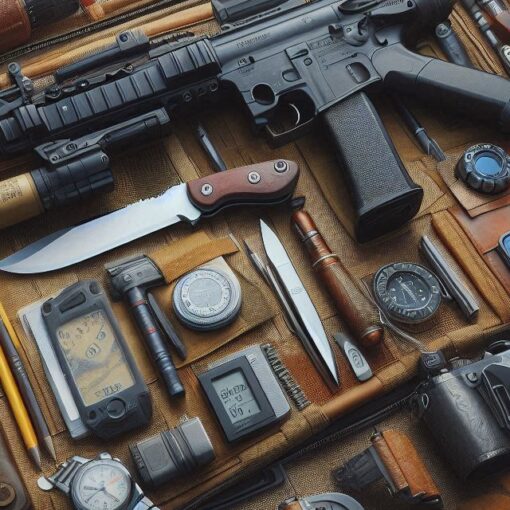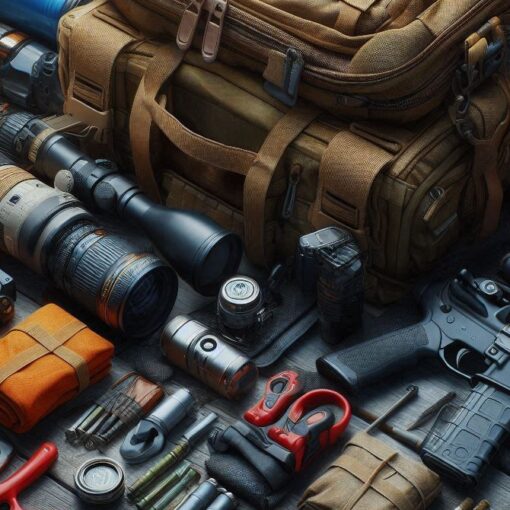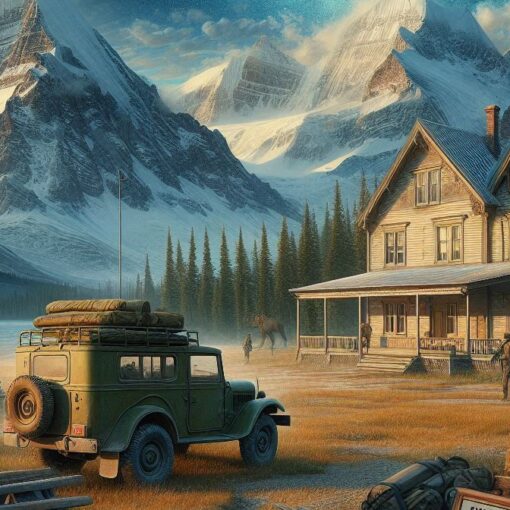Top Takeaways and Key Concepts
- Stock essential wound care supplies like bandages, antiseptic wipes, gauze, and medical tape.
- Include pain relief and medical tools such as pain relievers, tweezers, gloves, and scissors.
- Add specialized items like splints, emergency blankets, and allergy medicine for serious situations.
- Organize your kit efficiently so supplies are easy to find quickly during emergencies.
- Maintain and update your kit regularly by checking expiration dates and restocking used items.
Summary of This Article
This article explains how to build a reliable first aid kit for home, travel, or outdoor survival. It highlights the importance of including both basic supplies like bandages and antiseptics as well as specialized tools like splints and emergency blankets. The article also stresses the need to organize your kit for quick use, check and replace expired items, and learn basic first aid skills to be truly prepared for emergencies. With proper planning, a first aid kit offers peace of mind and practical protection in unexpected situations.
Short Video Version of this Article
Putting together a decent first aid kit? Very important. It’s like a safety net for when you get hurt or have an accident. Accidents can happen anywhere, even at home, when camping, or on an expedition that goes awry.
Please Note: This post may contain affiliate links. If you click one of them, we may receive a commission at no extra cost to you. As an Amazon Associate, I earn from qualifying purchases.
You can quickly take care of little injuries if you have the correct medical materials. You could think of it as your own little emergency room. Let’s talk about what you should put in your kit and why each item is useful.
You will surely need band-aids. They save lives when you cut or scrape yourself. A band-aid can make a kid feel like a superhero, right? Antiseptic wipes are great too. They help keep things clean and stop illnesses from happening. No one wants a small cut to transform their little trip into a much bigger catastrophe.
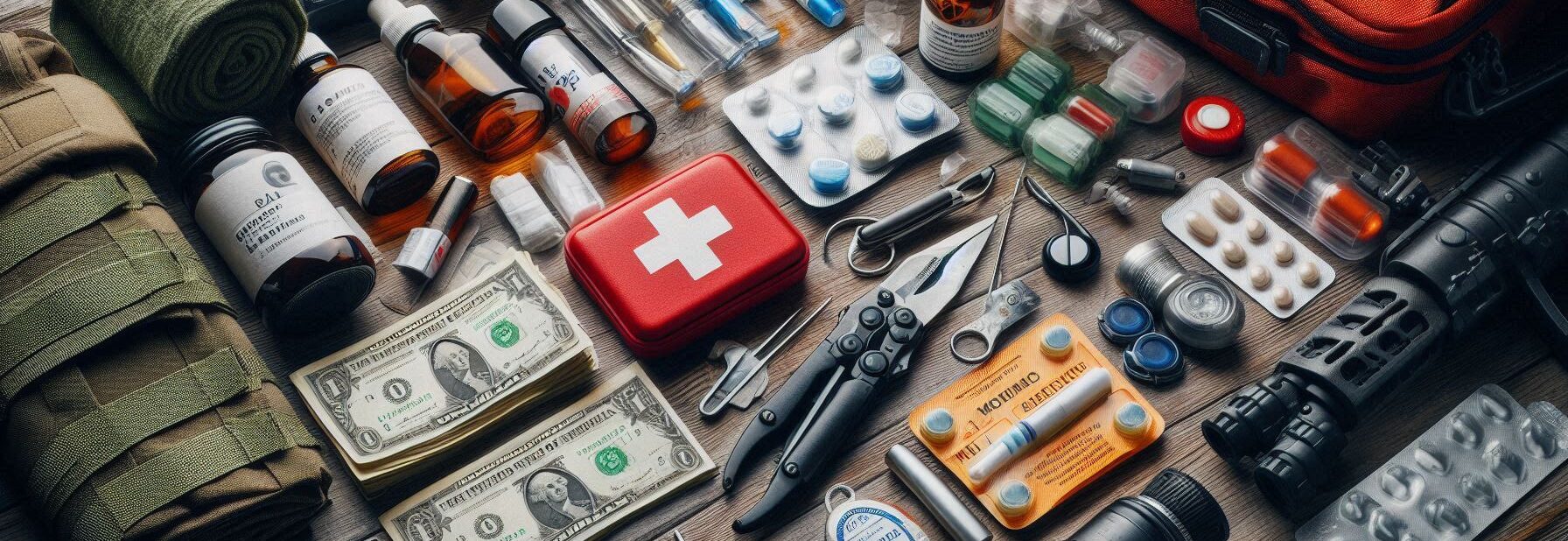
Pain medications can be quite helpful. Did you get a headache from hiking too long? Or a painful back from putting up the tent? You will feel better if you just pop one of those. Tweezers are next. They’re not just for getting rid of splinters. If an insect won’t leave you alone when you’re hiking, you might need these.
Don’t forget the tape and gauze, too. They work great for bigger cuts. You’re all set after you wrap it up. You might also want to add some gloves. For safety’s sake. When you have to deal with messier problems, it’s like putting on your superhero outfit.
Now, having a first aid kit available isn’t only a good idea. It’s for your peace of mind. You can enjoy your time outside, relax a little more, and focus on the fun things when you know you have everything in order.
So, let’s get your stuff in order! If you make it a priority, you’ll be ready for anything that comes your way, even the tiny bumps in the road.
Essential First Aid Supplies
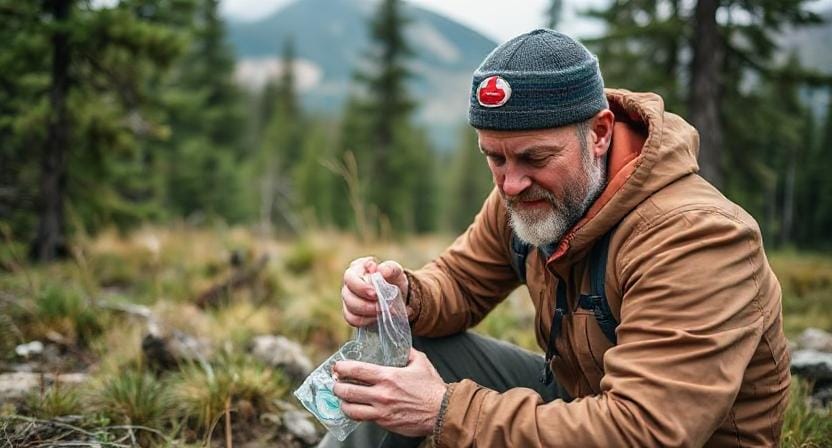
First off, let’s talk about the must-have items in any first aid kit. I remember when I went on my first camping trip with friends; we thought we were invincible until one of us tripped over a root and scraped their knee pretty badly.
Luckily, we had some basic supplies like antiseptic wipes and band-aids, which made all the difference!
Got your kit ready? Great! You’ll need a bunch of things to keep everyone safe on your adventures. Let’s start with adhesive bandages. You want these in different sizes for cuts and scrapes. They’re like little shields for your skin. Super handy!
You’ll also need some sterile gauze pads. These are perfect for bigger boo-boos. Pair them with adhesive tape to keep everything snug and secure. No one likes a bandage that slips off, right?
Oh! You can’t forget a pair of scissors. They’re key. Not just for cutting gauze. You might need them for opening snack packages or even trimming clothing away from an injury. You’ll thank yourself later when you’re not wrestling with a stubborn wrapper.
Antiseptic ointment is a must too. It helps keep wounds clean and stops infections from crashing the party. A little dab can make a big difference. Nobody wants to deal with extra stuff when you’re out having fun.
Pain relievers like ibuprofen or acetaminophen are lifesavers. They help take the edge off headaches or sore muscles. When you’re trying to enjoy nature, discomfort can really put a damper on things.
Adding these small items? Totally worth it! They can turn a tough situation into a manageable one. You’ll be ready for those little surprises that life throws at you. Just imagine—having everything you need right at your fingertips! It makes adventures more enjoyable and way less stressful.
Specialized Medical Supplies

While basic supplies are important, specialized items can elevate your first aid game significantly. For instance, if you live in an area prone to snake bites or insect stings, including a snake bite kit or sting relief spray could save someone’s life one day!
I once attended a wilderness survival course where we learned how to deal with allergic reactions using an EpiPen. This little device might seem insignificant but can be vital if someone has severe allergies.
Let’s talk about splints. If you’re heading deep into the woods, they’re a smart choice. Splints can help keep broken bones safe and still until help arrives. It’s better to be prepared, right?
Emergency blankets are another great idea. They’re these shiny, lightweight sheets that trap heat. Super handy when it gets cold. I remember sitting by the fire one night, shivering. I wished I had one. Just a thin layer could’ve made all the difference. Hypothermia is no joke!
These blankets don’t take up much space either. They can fit easily in your pack. You’ll be so grateful to have them if things get chilly.
Packing smart means thinking ahead. You want to enjoy your adventure, not worry about what could go wrong. With splints and emergency blankets, you’re setting yourself up for success. It’s all about being ready for whatever the wilderness throws your way!
Organizing Your Kit

Now that we know what to put in your first aid kit, let’s talk about how to put it all together. Believe me, there is nothing worse than having to dig through a cluttered bag when someone really needs aid!
For different types of supplies, such bandages in one part and pills in another, start by using clear plastic containers or zippered bags.
It really helps to label containers! I learned this the hard way. My companion injured her finger while trying to chop vegetables for dinner on our last hike. That was a moment! Because everything was in order, I discovered what I needed right away. It made a big difference to be able to get to it quickly.
Putting things you use a lot at the top of your kit can help you relax a lot. No one wants to dig around, do they? You just want to put on a band-aid or some ointment and get back to having fun.
Picture this: it’s raining and you’re in a rush. It’s a game-changer to make things easier to find. You can aid your pals instead of looking through a dirty bag.
So, take a minute to get everything in order. Make sure everything is correctly labeled. It will make your trips go more smoothly. Believe me, it’s nice to know precisely where everything is when you need it!
Regularly Check Expiration Dates

It’s easy to forget about our kits once they’re packed away safely somewhere—but regular maintenance is key! Medications have expiration dates that you need to monitor closely; otherwise, they may lose effectiveness when you really need them most.
Every few months, it’s a good idea to check your first aid kit. I try to do it twice a year. Just last summer, I noticed some band-aids had expired. Total bummer! I could’ve saved myself a headache if I’d checked sooner. It’s so easy to forget what’s in there.
You might think everything’s fine until you’re about to leave for an adventure. Then, surprise! No more antiseptic wipes. That’s a tough spot to be in.
Also, think about what you’re doing each season. If summer’s coming up, sunscreen is a must! You don’t want to be stuck outside burning while having fun. Cold packs are so helpful in winter, too. They’re great for injuries or just keeping things cool. Little things like that make a big difference.
Keeping your kit fresh and ready? It’s like having a safety net for all those adventures. You’ll feel a lot more relaxed knowing you’re truly ready for anything out there!
Learning Basic First Aid Skills

You need more than just the correct tools to be ready; you also need to know what to do! You may learn skills that could save lives in an emergency by taking a simple first aid class.
I took this interesting class a few years ago. We taught how to give CPR and how to treat cuts and scrapes. It gave me so much power! Just wondering about how much I could help if things went wrong when I was out with pals. It really made me feel like I could handle anything!
The best part? Getting to know other people who liked prepping as well. They told each other stories about their own camping problems. You won’t believe what happened to a guy when he got stung by a bee! He knew exactly what to do, yet it was still a crazy journey. You know, hearing those stories made everything seem genuine.
Everyone had their own adventures, some of which were funny and some of which were scary. But we all learnt at the same time. It’s good to share such times with other people who love the outdoors as much as you do. We made friends, learnt new things, and had fun.
It’s like having our own little safety net to know that we can aid each other. It makes going outside even more fun. You may enjoy nature and be sure you’re ready for anything that comes your way!
Conclusion: Be Prepared
It’s not enough to just collect things to make an effective first aid pack. It’s about being ready for everything, whether we’re out in the wild or just at home. That feeling of tranquility is all that matters, right?
It makes a significant difference to know that your tools are organized the appropriate way. You don’t have to look through a mess when things go wrong. When you need it, everything is right there. You know how it is when you have a magic pouch that makes everything better?
It also helps a lot to learn some fundamental things about how to use those goods. It doesn’t seem as scary when you know a little bit. You can handle whatever happens with more confidence. That changes the game.
If we do these things now, we’ll be ready for tomorrow. A little bit of planning now can save us a lot of trouble later. We’re not only ready, but we’re also more at ease. And that’s really lovely when you’re outside enjoying nature. Who doesn’t want to be ready for an adventure?
Featured Snippet: A well-prepared first aid kit is essential for safety at home, during travel, or in the outdoors. Stocking basic medical supplies, organizing items for quick access, adding specialized tools, and checking expiration dates ensures you’re ready to handle unexpected injuries and emergencies with confidence.
Frequently Asked Questions
What are the most important items to include in a first aid kit?
A good first aid kit should include bandages, antiseptic wipes, gauze, medical tape, scissors, gloves, and pain relievers for treating common injuries.
Why should I add specialized first aid supplies?
Specialized items like splints, allergy medicine, or emergency blankets help manage serious injuries until professional medical help is available.
How should I organize my first aid kit?
Group similar items together in labeled pouches or containers so you can quickly find what you need during an emergency.
How often should I update my first aid kit?
Check your kit every few months to replace expired medications, restock used supplies, and ensure everything is clean and functional.
Do I need different first aid kits for home and outdoor use?
Yes, outdoor kits should include extra items like emergency blankets, splints, and bug treatment, while home kits can be more basic.
Why is learning basic first aid important?
Knowing how to use your supplies and handle injuries safely gives you the confidence to respond quickly in emergencies.
Where should I store my first aid kit?
Keep your kit in an easy-to-reach location and make sure everyone in your household or group knows where it is stored.
Suggested Resources:
Basic Wilderness First Aid
https://www.wildernessmedical.com/basic-wilderness-first-aid-course
How To Build a First Aid Kit
https://www.redcross.org/get-help/how-to-prepare-for-emergencies/types-of-emergencies/first-aid-kit.html
First Aid Basics: What You Should Know
https://www.mayoclinic.org/first-aid/basics/art-20056601

Kevin Collier is a seasoned outdoor enthusiast and writer for Trekbug.com, specializing in outdoor adventures, survival strategies, and prepping insights. With a deep love for nature and a commitment to self-sufficiency, Kevin empowers readers to embrace the wilderness confidently. He shares valuable tips, practical techniques, and inspiring stories, helping both novice and experienced adventurers develop essential skills for surviving and thriving in the great outdoors.


